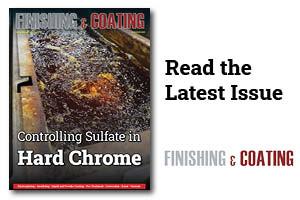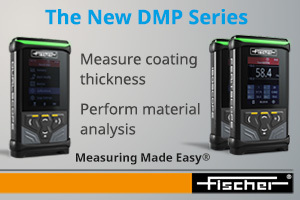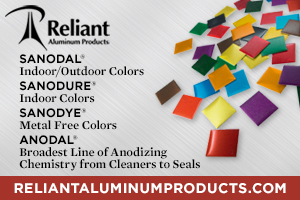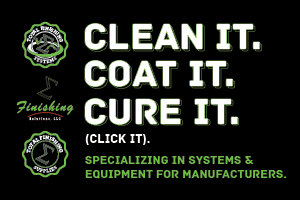Electrocoating (e-coat) is a widely used finishing method that provides consistent, corrosion-resistant coverage for metal parts.
It combines the efficiency of paint application with the precision of electrochemistry, making it ideal for automotive, appliance, and industrial components.
What Is E-Coating?
 Brian AsikE-coating, short for electrocoating, is a process where electrically charged particles are deposited from a water-based solution onto a conductive part. The part is submerged in a bath while an electrical current is applied, causing the coating to adhere evenly, even in hard-to-reach areas.
Brian AsikE-coating, short for electrocoating, is a process where electrically charged particles are deposited from a water-based solution onto a conductive part. The part is submerged in a bath while an electrical current is applied, causing the coating to adhere evenly, even in hard-to-reach areas.
After e-coating, the part is typically cured in an industrial oven at temperatures ranging from 325°F to 400°F (163°C to 204°C).
The exact curing time and temperature depend on the specific coating formulation and part dimensions, but a common curing schedule is: 20–30 minutes at 350°F (177°C).
This high-temperature bake is essential to bond the coating and create a durable, chip-resistant, and corrosion-resistant finish. Therefore, any masking materials used must be able to withstand these temperatures without degrading or leaving residue.
Because e-coating reaches even recessed and hidden areas, accurate masking is critical for parts that require selective coverage. Whether you’re protecting threads, grounding points, or contact surfaces, the following masking tips can help ensure a clean and functional finish.
1. Know Your E-Coat Process
Since the coating follows the path of the electric current, it can reach areas that may seem shielded. Even internal features can be coated if they conduct electricity. That’s why it is best to mask any critical surface—inside or out—that must remain free of coating.
2. Choose the Right Masking Material
E-coating includes a curing cycle with temperatures typically ranging from 300–400°F. Your masking materials need to hold up to both the liquid immersion and the heat without degrading or leaving residue.
The best materials to use are: silicone rubber plugs and caps, high-temp polyester tapes, and custom die-cut films. Try to avoid using standard vinyl or low-temp adhesive materials, as they are not designed to withstand the harsh conditions of the process and may fail in e-coat conditions.
3. Use Custom Die-Cut or Molded Silicone Masks for Complex Parts
Standard plugs and tapes work well for standard shapes, but complex part geometries often need a more tailored solution. Molded silicone masks are custom-designed to fit specific part features, providing a precise seal that prevents coating creep and ensures consistent results.
These masks are:
- Reusable across multiple e-coat cycles
- Heat-resistant up to 400°F
- Time-saving, as they are easy to apply and remove
- Ideal for high-volume production or parts with irregular shapes, threads, or recessed areas
Custom die-cut tapes or molded silicone masks can speed up masking and provide a tighter seal on intricate geometries. While they require a small upfront tooling investment, molded silicone masks can significantly reduce masking time and rework, while improving quality and performance in the long run.
4. Prevent Leakage or Under Masking
Because e-coat is done in a liquid environment, it is known for its ability to "creep" into masked zones if seals aren’t secure. A tight seal is key to keeping coating away from surfaces that should remain untouched.
Tips to get the best seal:
- Clean all part surfaces (internal and external) before masking with tape.
- Use tapered or snug-fitting plugs, testing them to ensure a tight seal.
- Use threaded masking for threaded features to avoid wicking.
- Apply pressure around edges and curves when using tapes or die cuts.
5. Plan for Easy Removal
Masks should come off cleanly after the cure cycle; this reduces time spent on cleanup and protects the finished part. For this reason, use peelable masks with removal tabs or reusable silicone caps or plugs that won’t leave residue or tear during removal.
6. Test Before You Scale
Running a few parts through the entire process can help you spot potential issues before running a full batch. It is important to build in time for test runs to verify masking performance under your specific line voltage, immersion time, and bake conditions.
Final Thought
E-coating is valued for its coverage, consistency, and corrosion resistance—but none of that matters if functional areas are improperly coated. The right masking approach ensures your parts perform as intended while maintaining a professional finish.
Brian Asik is Senior Vice President at Custom Fabricating & Supplies. Visit www.customfabricate.com.


































